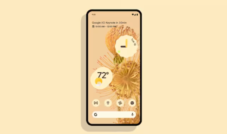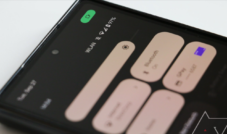
With the main telephone manufacturers such as Apple, Google and (in some regions, at least) that Samsung build its own processors, Qualcomm premium Snapdragon Premium CPUs face a more rigid competition than ever. But there are still some companies that still need those chipsets: Asus is a remarkable example. The ROG phones of Taiwanese Electronics giant have high-end components aimed at the most demanding users and mobile players.
It is exactly the audience of the new “Smartphone for Snapdragon Insiders”, a phone that Qualcomm built with the help of Asus “for their fans”. It has features such as a 6.8-inch screen with a 144Hz update frequency, compatibility with full 5 g, fast charge and special audio improvements. Clearly, this device of $ 1,499 is a showcase for the Qualcomm strengths, and although its name says it is for Snapdragon experts, anyone can buy it. But should you?
Design
That depends on some things, one of which is your preference in telephone sizes. This is a big phone. At 210 grams (or 0.46 pounds), the smartphone for Snapdragon experts (I’m going to call SSI from now on) is one of the heaviest telephones I have recently used. Many devices with so large screens tend to weigh at the same time: the Galaxy Note 20 Ultra is lighter, but the iPhone 12 Pro Max and the Galaxy S21 Ultra are actually even heavier.
The SSI also seems remarkably different from the iPhones and galaxies that, depending on your taste, could be something good or bad. Its rounded rectangle body has a matte blue finish with bright red accents on the camera button and the volume button. And do you know how the Bezels for the Selfie Chambers left in the last two years in most of the insignia? That is not the case here, there is still a slim edge above the screen where the sensor sits. That, combined with the silhouette and the finish, make the SSI look quite obsolete.
Another polarizing feature in the SSI is an illuminated Snapdragon Snapdragon fireball icon on the back, below the fingerprint sensor. You can configure the light to “breathe” (ie, shine and turn off), turn it off in total or if you stay all day. However, even when it is not on, the logo is quite obvious. Add the clutter to the phone, and made the confusing fingerprint scanner feel every time I wanted to unlock the device without looking back.
One last note about the design: The blow for the triple SSI camera matrix on the back is a surprising horizontal row that is well hidden at the top left. It is smaller and thinner than those in the galaxy and the iPhones, although it still exceeds enough that the phone does not lie down in a flat when you put it on a table.
Show
Topping the list of SSI premium specifications is your screen. The AMOLED panel is Samsung, and runs at 2,448 x 1.080. It also refreshes in 144Hz, which is one of the fastest smartphones in modern, exceeding the Galaxy S21 series and Note, not to mention the iPhone family. To make sure you are shooting your enemies as fast as you can touch them, the screen also offers a response time of 1 ms.
I furiously despised up and down on the Engadget homepage, as well as on my page, and the screen followed the rhythm with my finger. Shooting my enemies to Legends Wild Rift League was similarly answered, and a first-person shooter like Call of Duty was also satisfactory.
Since it is a grinding panel, it also offers deep vibrant and black colors in videos and photos. Its maximum luminosity of 1,200 nits also facilitates visualization under sunlight. However, it is worth noting, however, that the aspect ratio of 20.4: 9 causes a bit of content, the ends of long messages on the telegram, for example, disappear at the edges of the screen. Qualcomm does not seem to have optimized your screen to accommodate all applications.
Audio
The smartphone for Snapdragon Insiders is one of the first to present Qualcomm Snapdragon Sound technology, which promises a low Bluetooth latency, multiple listening profiles and smart amplifier software. It also has four MICS and the “High Dynamic Dynamic Range,” of Qualcomm, which says the company is able to deliver the study quality recording. The SSI comes with a pair of wireless and dynamic headphones, but most audio improvements will also work through the speakers of the phone.
The master and dynamic headphones were built using the Qualcomm SOC Bluetooth Audio and will support 96 KHz audio of 24 bits high resolution with active noise cancellation. Qualcomm also said that these should be kept connected to your phone, even if there are many other RF devices, so audio deletions should be minimal.
I have not visited many busy places during my tests, so I can not answer for how well these headphones remain connected in those situations. In addition, the headphones that Qualcomm sent the reviewers were pre-production and “do not reflect the sound quality of Snapdragon Ready Commercial”. The company said that when the devices are sent at the end of this month, they will have features such as high resolution audio and super wide voice for greater call clarity. For now, however, all I can say is that the headphones perform well. The songs like “di” by Doja Cat and “next level” by AESPA also sounded richer than in the pixel Buds 2.
The SSI itself also provided noisy and clear audio, although I usually do not expect a great quality of the speakers of the phone, since I rarely play music through them. The sound effects and the background tracks in the games and YouTube videos sounded very well, and that is practically everything I need from the sound system of a phone.
Cameras
Like many modern flags, SSI has a trio of cameras in the back. The main 64 megapixel sensor with opening F / 1.8 is accompanied by a 12 megapixel ultrawide option and a telephoto 8 megapixel. That is a fairly typical configuration, although the main camera here is more sharp than those that you will find on iPhones and pixels.
Qualcomm said an update on the air closer this month that will enable, among other things, a full resolution mode for a better “snapshot yield”.
Other improvements that is assumed that the update includes including “better texture / noise performance”, “improvement of night quality”, “super resolution video”, “improved camera tuning” and “best autofocus experience”. The company said it also “it will fully optimize” HDR through the ultra-wide and telephoto cameras and the reduction of noise of multiple frames. That’s too many things that come, that could influence how I feel with respect to the camera, and I wish they were available to try before the phone reaches the shelves at the end of this month. For now, I am assumed that I must take the word of Qualcomm for it and it is not how the revisions work.
Without the updated software, the SSI delivered photos of Lackluster that paled in comparison with the note 20 Ultra and Pixel 5’s. The images of the Qualcomm phone had a blue (sometimes green) distribution and were not significantly sharpest or clearer than those of the pixels, which are one hundred less. Google portrait mode is also superior, and never stopped keeping the flashlight fly that was taking pictures of focus. Meanwhile, the insect came out blurred in 90 percent of the shots in the SSI.




![How to solve [pii_email_c0cba36634674c2efac7] error?](https://basicreader.com/wp-content/uploads/2021/09/How-To-Fix-pii_email_e6685ca0de00abf1e4d5-Error-Code-3-650x366.jpg)
![How to solve [pii_email_12b601a08d6f263a75a6] error?](https://basicreader.com/wp-content/uploads/2021/09/Outlook-Surface-Phone-Italia-1-5b3a54c146e0fb005b78d185-2-650x366.jpg)